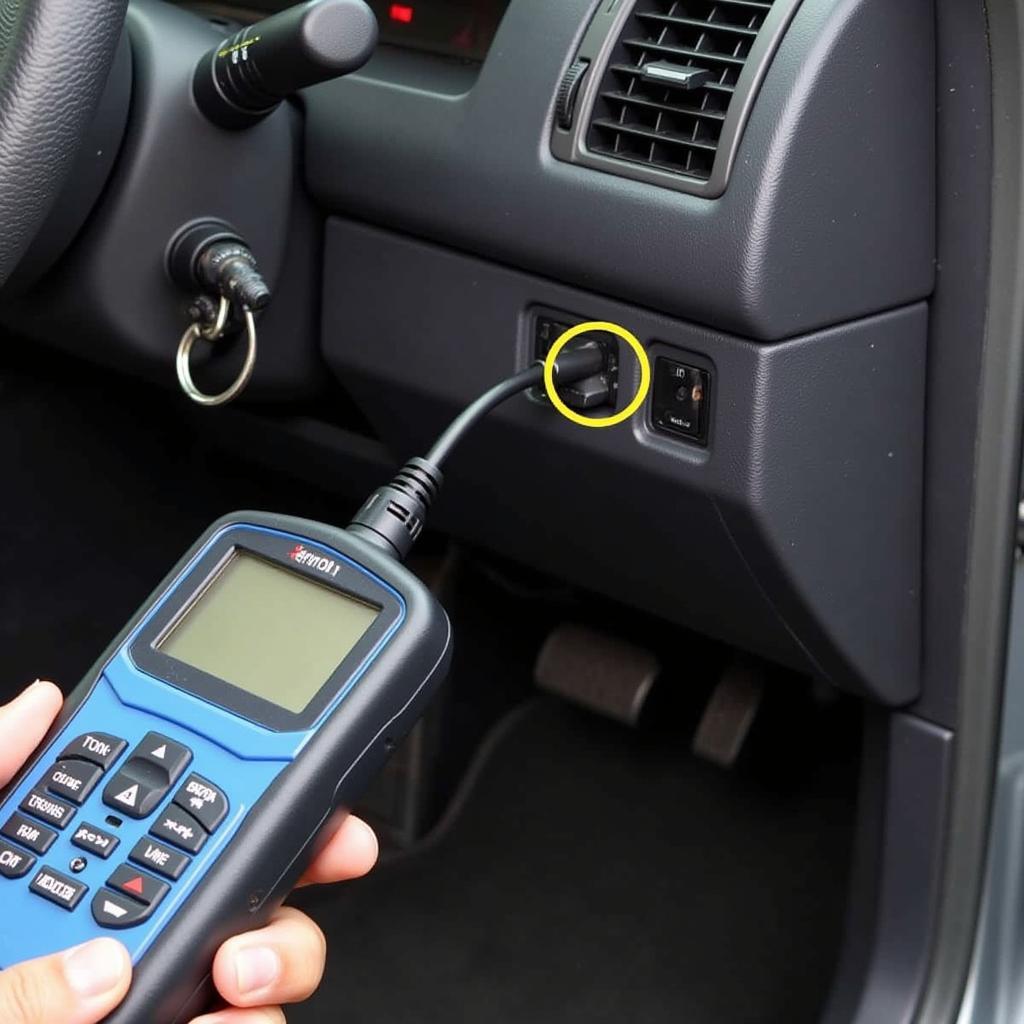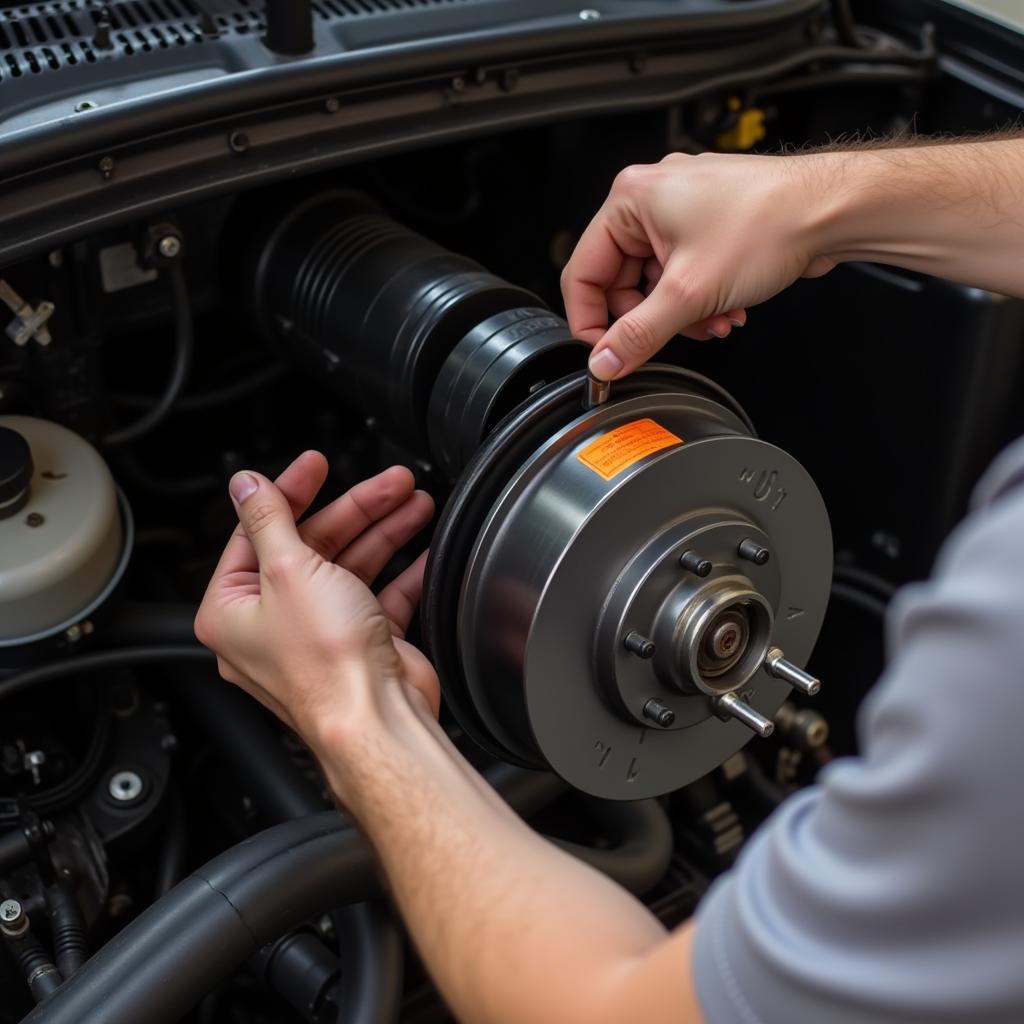Bleeding your 2000 Toyota’s brakes with a scan tool is a crucial maintenance procedure that ensures optimal braking performance. This guide will walk you through the process, explaining why it’s important and how to do it correctly, even if you’re not a seasoned mechanic.
Why Use a Scan Tool for Brake Bleeding on a 2000 Toyota?
Traditional brake bleeding methods can be time-consuming and may not always completely remove air from the system. Using a scan tool, however, offers a more efficient and effective approach, especially for vehicles like the 2000 Toyota, which often have complex ABS systems. The scan tool activates the ABS modulator, ensuring all trapped air is expelled. This leads to a firmer brake pedal and improved overall safety.
Advantages of Scan Tool Brake Bleeding
- More Efficient: Completes the process faster than traditional methods.
- More Effective: Removes air more thoroughly, particularly in ABS systems.
- Improved Safety: Results in a firmer and more responsive brake pedal.
- Reduced Risk of Damage: Minimizes the risk of damaging brake components.
How to Bleed Your 2000 Toyota Brakes with a Scan Tool
Before starting, gather the necessary tools and equipment: a compatible scan tool, brake fluid (DOT 3 or DOT 4 as recommended by Toyota), a clear container, a wrench that fits your bleeder screws, and a helper to assist with the process.
- Connect the Scan Tool: Plug the scan tool into your 2000 Toyota’s OBD-II port, usually located under the dashboard on the driver’s side.
- Enter ABS Bleeding Mode: Power on the scan tool and navigate to the ABS bleeding function. The exact steps will vary depending on the scan tool model. Consult your scan tool’s manual for specific instructions.
- Prepare the Brake System: Open the hood and locate the brake master cylinder reservoir. Ensure the reservoir is filled with the correct type of brake fluid.
- Begin Bleeding at the Furthest Wheel: Start with the wheel furthest from the master cylinder (typically the passenger-side rear).
- Attach the Bleeder Hose: Attach a clear hose to the bleeder screw on the brake caliper and submerge the other end in the container filled with brake fluid.
- Open the Bleeder Screw: Have your helper slowly depress the brake pedal. While the pedal is depressed, open the bleeder screw using the wrench. You should see air bubbles and brake fluid flowing through the clear hose.
- Close the Bleeder Screw: Tighten the bleeder screw before your helper releases the brake pedal.
- Repeat the Process: Repeat steps 6 and 7 until no more air bubbles are visible in the hose.
- Move to the Next Wheel: Proceed to the next furthest wheel and repeat steps 5 through 8. The typical bleeding sequence is: Passenger-side rear, Driver-side rear, Passenger-side front, Driver-side front.
- Exit ABS Bleeding Mode: Once all four wheels have been bled, exit the ABS bleeding mode on the scan tool.
- Top off the Brake Fluid: Check the brake fluid level in the master cylinder reservoir and top it off as needed.
- Test the Brakes: Test your brakes in a safe location to ensure a firm pedal feel and proper braking performance.
 Connecting Scan Tool to OBD-II Port
Connecting Scan Tool to OBD-II Port
“Using a scan tool for brake bleeding is a game-changer. It ensures all air is purged from the system, leading to a more responsive and safer braking experience,” says Robert Johnson, ASE Certified Master Technician.
2000 Toyota Brake Bleeding: Common Questions
How often should I bleed my 2000 Toyota’s brakes?
It’s generally recommended to bleed your brakes every 2-3 years or 24,000-36,000 miles.
What type of brake fluid should I use for my 2000 Toyota?
Consult your owner’s manual for the recommended brake fluid type, typically DOT 3 or DOT 4.
Can I bleed my 2000 Toyota’s brakes without a scan tool?
Yes, but using a scan tool is highly recommended for optimal results, especially for vehicles with ABS.
What if my brake pedal still feels spongy after bleeding?
There may be a leak in the system, or another underlying issue. Consult a qualified mechanic.
How much does it cost to have a 2000 Toyota’s brakes bled professionally?
The cost can vary, typically ranging from $75 to $150.
 Checking Brake System After Bleeding
Checking Brake System After Bleeding
“Proper brake maintenance is essential for safe driving. Bleeding your brakes with a scan tool provides the peace of mind that your braking system is functioning at its best,” adds Susan Miller, Automotive Engineer.
Conclusion
Bleeding your 2000 Toyota brakes with a scan tool is a straightforward process that greatly improves braking performance. By following this guide, you can ensure a safer and more enjoyable driving experience. If you require further assistance or prefer to have a professional perform this service, feel free to contact us at ScanToolUS. We are always happy to help. You can reach us at +1 (641) 206-8880 or visit our office at 1615 S Laramie Ave, Cicero, IL 60804, USA. Remember, maintaining your brakes is a critical aspect of vehicle safety. Don’t hesitate to reach out if you have any questions about 2000 Toyota Brake Bleeding With Scan Tool.

